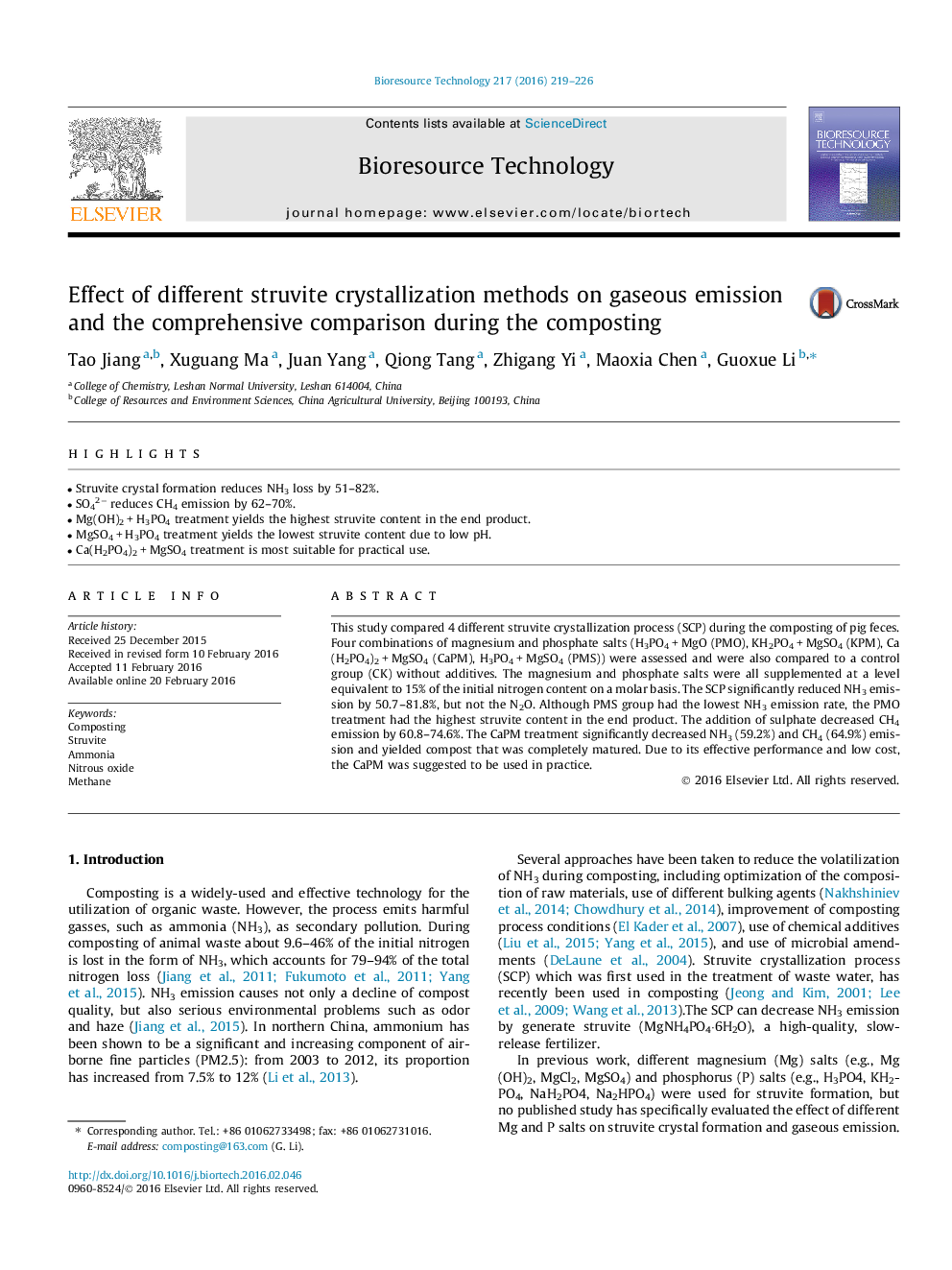| Article ID | Journal | Published Year | Pages | File Type |
|---|---|---|---|---|
| 679161 | Bioresource Technology | 2016 | 8 Pages |
•Struvite crystal formation reduces NH3 loss by 51–82%.•SO42− reduces CH4 emission by 62–70%.•Mg(OH)2 + H3PO4 treatment yields the highest struvite content in the end product.•MgSO4 + H3PO4 treatment yields the lowest struvite content due to low pH.•Ca(H2PO4)2 + MgSO4 treatment is most suitable for practical use.
This study compared 4 different struvite crystallization process (SCP) during the composting of pig feces. Four combinations of magnesium and phosphate salts (H3PO4 + MgO (PMO), KH2PO4 + MgSO4 (KPM), Ca(H2PO4)2 + MgSO4 (CaPM), H3PO4 + MgSO4 (PMS)) were assessed and were also compared to a control group (CK) without additives. The magnesium and phosphate salts were all supplemented at a level equivalent to 15% of the initial nitrogen content on a molar basis. The SCP significantly reduced NH3 emission by 50.7–81.8%, but not the N2O. Although PMS group had the lowest NH3 emission rate, the PMO treatment had the highest struvite content in the end product. The addition of sulphate decreased CH4 emission by 60.8–74.6%. The CaPM treatment significantly decreased NH3 (59.2%) and CH4 (64.9%) emission and yielded compost that was completely matured. Due to its effective performance and low cost, the CaPM was suggested to be used in practice.
